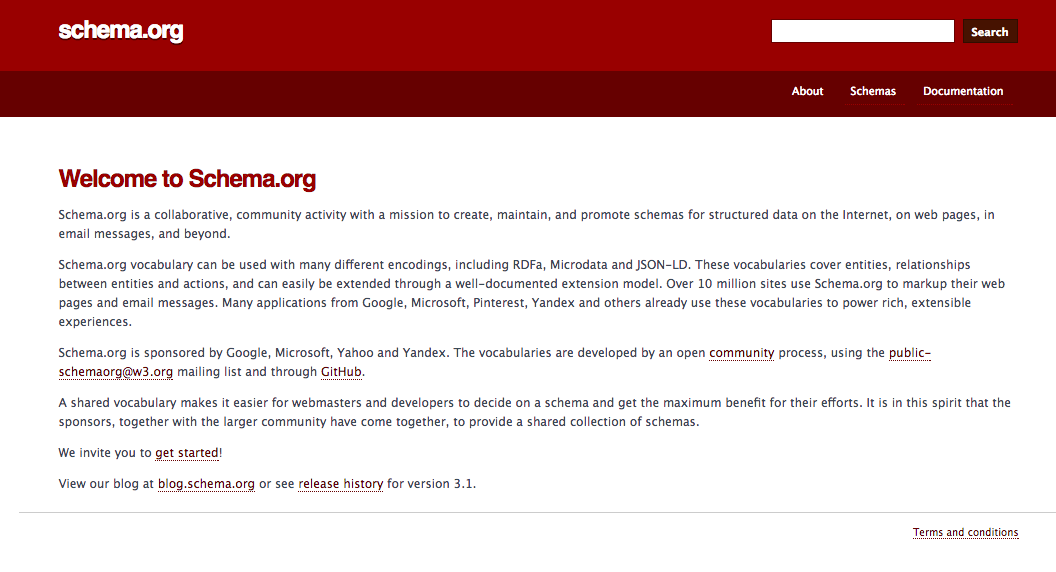Local Schema Address Markup: Are top ranking law firms using it?
BY Dexter Tam

LISTEN
Organization of information on web pages and throughout a website is the key to good results. A well-structured website with clearly organized code helps both visitors and search engines navigate through pages, enhancing user experience and Google’s ability to rank page content. Structured data enhances search engines’ ability to understand exactly what is on your pages and how it should be prioritized.
Structured data allows authors to articulate exactly what their content means to search engines.
When you implement structured data into your content, you qualify for a unique feature of Google Search: Rich Cards. Rich Cards is a format designed for improved mobile experience. Rich Cards puts an emphasis on visual display, such as displaying an image along with a recipe on mobile search. Rich Cards is an evolution of Rich Snippets, which are used to display certain information within listings on results pages.
Introduction to Schema.org

On June 2, 2011, America and Russia’s largest search engines: Google, Bing, Yahoo and Yandex respectively, came together to collaborate and create a unified set of schemas for data comprehension. The result of this collaboration is published at schema.org.
A schema is a template or blueprint of how a database is constructed. Along with the vocabulary in schema.org, MicroData, RDFa, JSON-LD and other formats used to understand data, are included. Google recommends using JSON-LD for your markups. These search engine giants hope this partnership will promote organization on the internet.
You do not need to understand all of the technical aspects of schema, only its results. Schema information tells search engines the meaning of certain information, like the time and date of an event or the aggregate rating of an article. Most pieces of data have the potential to be marked up with some type of identifier.
How schema markup can benefit SEO
A search engine determines a website’s value by how informative and receptive it is to consumers. Schema markups allow web crawlers, bots that browse and index content on the internet, to effortlessly deduce data. This in turn improves user experience and results in a search engine favoring your website.
In order to stand out, most advertisers use a rich snippet. A rich snippet is extra text generally found under a search listing. It could be extra information pertaining to your services or product. A Searchmetrics study in 2014 showed 36.6 percent of Google searches supported schema rich snippets, yet only 0.3 percent of websites are using it. Being in the extreme minority of websites that utilize this tool will help your listing look more attractive to users, possibly increasing your click-through rate and achieving greater conversions.
Why local businesses and law firms should use schema PostalAddress
Schema PostalAddress is a specific schema markup vocabulary used to better decipher local businesses’ location information. As a local law firm, it is critical your address is presented in a way that both the user and a web crawler can easily comprehend.
- <h1>Beachwalk Beachwear & Giftware</h1>
- A superb collection of fine gifts and clothing to accent your stay in Mexico Beach.
- 3102 Highway 98
- Mexico Beach, FL
- Phone: 850-648-4200
This is an example of a local business’s address and description without schema PostalAddress markup. A person will be able to discern the information without markup, but a web crawler might not be able to. We know, because of the way the information is structured, that Beachwalk is the name of the store. A web crawler, however, could mistakenly assume that this is an available activity, along with beach apparel and gifts for sale. With markup, the bot will know which text is the business name, street address, city and region.
<div itemscope itemtype="http://schema.org/LocalBusiness">
- <h1><span itemprop="name">Beachwalk Beachwear & Giftware</span></h1>
- <span itemprop="description"> A superb collection of fine gifts and clothing
- to accent your stay in Mexico Beach.</span>
- <div itemprop="address" itemscope itemtype="http://schema.org/PostalAddress">
- <span itemprop="streetAddress">3102 Highway 98</span>
- <span itemprop="addressLocality">Mexico Beach</span>,
- <span itemprop="addressRegion">FL</span>
- </div>
- Phone: <span itemprop="telephone">850-648-4200</span>
- </div>
This is the same local business’s address and description with a schema PostalAddress markup. As you can see, the markup gives web crawler codes that it is programmed to understand perfectly. It will now know which text is the business name, street address, city and region. You cannot afford to risk your brand being mislabeled or misinterpreted.
BLF experimented with Google to see how many top ranking law firm websites use schema PostalAddress. We chose thirteen cities, with some of the highest populations in the country, and competitive practice area keywords such as personal injury or estate planning. Of the 188 law firms BLF surveyed, 93 or 49 percent of law firms on the local map used schema PostalAddress markup and 144 or 76 percent used some form of schema markup. This indicates that using schema markups may be a minor ranking factor.
How to implement schema markup into your website
First, go to Google’s Structured Data Markup Helper. Select the nature of the content to markup, such as software application or a local business. Enter the URL you wish to markup, then highlight the specific text, and select the distinct markup you want it to correspond to. Continue with this method until you are satisfied with the content being marked, then click Create HTML.
Next, go into your content management system (CMS) or source code. If you are comfortable editing template files and code, you can do the following manually; otherwise it is recommended to let your webmaster make the necessary updates. Download the generated HTML file and add the highlighted relevant snippets to the appropriate areas of your CMS or source code. You can also do the action from the View HTML tab of the page. When completed, click Finish.
Use Google’s Structured Data Testing Tool to evaluate whether you performed the changes correctly. You can either enter the URL of the page you just edited or the code snippet. Whichever option you choose, you will be able to see whether the tool can detect the markup within the text.
Markup as much visible content as possible. The more you do, the clearer your data will be for web crawlers. Schema markup is a form of search engine optimization and innovation destined for longevity. When the country’s largest search engines band together for a collaborative effort, it shows how important they believe schema markup is to the future of search. Implementing it onto your website will allow you to stay on track toward what Google’s mission statement has always been: making information accessible.
LATEST STORIES



